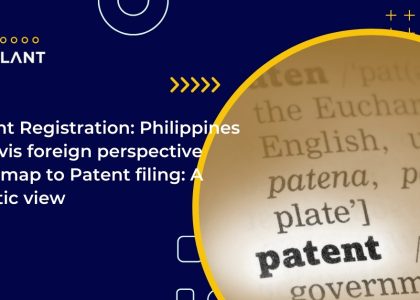Patent Assignment: How to transfer Patent ownership
Important legal and financial benefits accrue to patent owners, including the ability to prevent others from manufacturing, selling, using, or importing the claimed invention and the right to sue anyone found guilty of infringing on their patent.
A business entity, however, can only be the patent owner if the inventors have granted the business entity the rights to the invention. Therefore, it’sit’s crucial to get the patent assignment right to confirm that your organization is the patent owner if your employees are producing valuable intellectual property on your behalf.
What is a patent assignment, and why is it important?
When one party (the “assignor””) transfers all or a portion of its right, title, and interest in a patent or application to another party (the “assignee”), this is known as a patent assignment.
In simple terms, the assignee gets the exclusive rights to seek patent protection (via the filing and prosecution of patent applications), license, and enforce the invention and the interest of the original owner.
If you wish to take advantage of the benefits of patent rights, your company should own its patents. However, only an inventor or an assignee can possess a patent in the United States; businesses are not permitted to be named inventors. As a result, the legal process through which ownership is transferred from the inventor to your company is known as patent assignment.
Licensing vs. Patent Assignment
Although the two ideas are frequently mixed, patent assignment differs from licensing.
In a license agreement, the patent holder transfers ownership of the patented technology to a different organization (the “licensee”).
The first owner permanently assigns ownership to a different organization through a patent assignment.
Using employment agreements to transfer patent ownership
Establish stringent recruiting guidelines before your employees create intellectual property to ensure your IP rights will one day be upheld in court.
Have any new hires signed an employment contract that specifies the company’s ownership of any intellectual property (IP) created while working for you?
The following clauses ought to be present in the employment contract:
- Advance assignment of any IP created while employed by your company or using your company’s resources.
- An obligation to disclose any IP created while employed by your company or using your company’s resources.
- An ongoing obligation to provide the necessary information and execute documents related to the IP they created while employed, even after their employment ends.
- An obligation is not to disclose confidential information to third parties, including when the employee moves on to a new employer.
Encourage your staff to complete invention disclosure records to track the intellectual property (IP) they produce.
Your employment policies should also incorporate incentives to produce and disclose important IP because the paperwork might be rather extensive.
Drafting agreements for non-employees
It’s possible that some innovators working for your company need a formal employer-employee connection. This could complicate patent assignments if the proper preparations are made in advance. Watch out for the following staffing configurations:
- Independent contractors: Some inventors may be self-employed.
- Joint collaborators: Some inventors may be employed by, say, a subsidiary or service company instead of your company.
- Anyone who did work through an educational institution: For example, Ph.D. candidates may not be employees of either their sponsoring institution or your company.
The above clauses can still be used to create contractor or collaborator agreements. Before doing any activity on behalf of your business, make sure the individual innovator signs the document.
Obtaining written assignments for new Patent Applications
You should obtain formal assignments for each new patent application when submitted, in addition to signed employment agreements to record ownership of the particular patent property.
For ownership proof, don’t just rely on the job contract:
- The employment agreement might contain confidential terms, so you don’t want to record them with the patent office.
- Because employment agreements are executed before beginning the process of developing the invention, they will only establish what specific patent applications are being assigned.
An inventor or co-inventor who the company no longer employs may refuse (incorrectly or correctly) to perform the formal assignment for each patent application, even though you can do so after the application has been filed.
As a result, we advise completing the assignment before filing to demonstrate ownership as of the filing date and prevent issues (like getting signatures from estranged inventors).
How to execute a written patent assignment?
Good invention assignments ought to:
- Be in writing: Oral agreements to assign patent rights are typically not enforceable in the United States.
- Identify all parties: Include the names, addresses, and relationships of the assignor(s) and assignee.
- Identify the patent being assigned: State the patent or patent application number, title, inventors, and filing date.
- Be signed by the assignors. Be notarized: If notarization isn’t possible, have one or two witnesses attest to the signatures.
Recording a patent assignment with the USPTO
Without a formal assignment with the USPTO, another party may claim ownership of the granted patent, and in rare circumstances, you may even lose your rights to the issued patent.
As a result, the patent holder must document the assignment with the USPTO’s Assignment Recordation Branch. They can submit a Recordation Cover Sheet and a copy of the patent assignment agreement using the Electronic Patent Assignment System (EPAS).
Within three months after the start of the assignment, they must turn in these papers. The USPTO will levy no recordation fee if it is electronically recorded.
To whom does a patent belong? All details regarding a patent’s present and previous assignments are publicly available on the USPTO website.
When do I need to execute a new assignment for a related application?
Unless additional content is added in a new filing, each patent application will only require one patent assignment (e.g., in a continuation-in-part or non-provisional application that adds new matter to a provisional application). In that instance, even if the same innovators created the new subject, you will need a separate assignment to cover it.
What if an inventor won’t sign the written assignment?
You can still submit a patent application if you can’t get an inventor to sign an invention assignment, but you’ll need to prove your ownership first. You can frequently rely on an employee contract, company policy, invention disclosure, or other employment-related documentation to prove ownership.
Do I need to record my assignments in foreign countries?
Most assignments involve the transfer of all ownership interests, rights, and privileges in all patents worldwide.
The assignee cannot enforce the patent rights or seek compensation for any infringement that occurs before the recordation in some countries because the assignment may not be legally binding until it has been recorded there.
Additionally, there might be formal requirements that are only sometimes needed in the US. For instance, some nations might mandate that both parties sign and include one or both parties’ addresses in a transfer between companies.
Consult a patent lawyer in that nation if you’re assigning patents issued there to learn what must be done to document the transfer of ownership properly.








